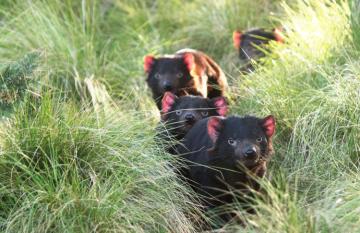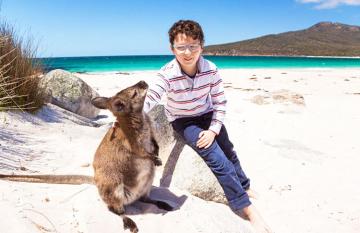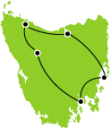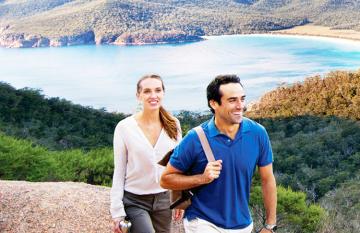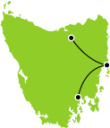
Tasmania’s East Coast is one of the most stunning regions in the country, full of magnificent landscapes, teeming wildlife, and a wealth of activities to enjoy throughout the year. From hiking and mountain biking to surfing and wine tasting, there’s always something new and exciting to do. We’ve put together this list of top activities on the East Coast to help you make the most of your time in Tasmania.
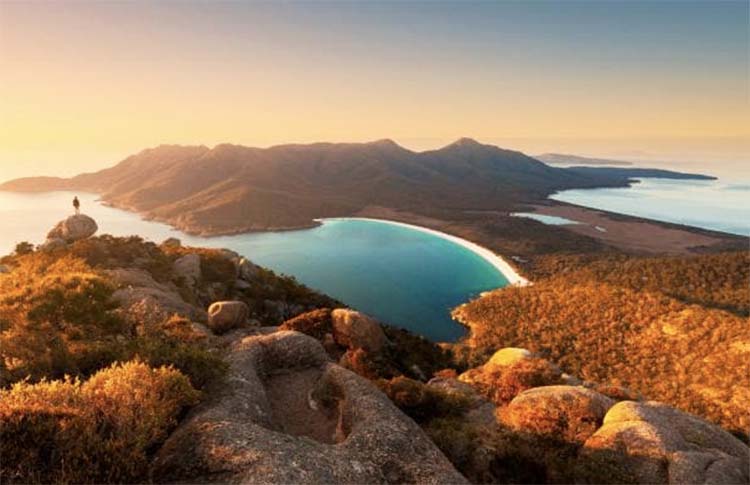
Contents
Discover the Natural Beauty of Tasmania’s East Coast
Tasmania's East Coast boasts many conservation areas and several national parks dotted along the coastline, each with its own unique appeal. The snow-capped mountains, unique rock formations, temperate rainforests, and sandy beaches bring out the diversity of the Tasmanian landscape. The region is also home to a varied spectrum of wildlife, providing incredible opportunities to catch a glimpse of rare native species.
Freycinet National Park
With its pink-hued granite mountains, white sand beaches, and crystal-clear sea, Freycinet National Park, located on the Freycinet Peninsula around 100 km (62 mi) northeast of Hobart, is one of the crown jewels of Australia’s national park system. It offers a wide range of activities, from leisurely beach strolls and swimming to mountain walking, climbing, and abseiling. Spotting wildlife is another thrilling experience—the park is home to 49 native Tasmanian species.
More things to do in Freycinet National Park
- Take a cruise to Wineglass Bay, considered to be one of the most beautiful beaches in the world.
- Take a short stroll up to the Cape Tourville Lighthouse with stunning views of the islands and Wineglass Bay.
- Visit the Moulting Lagoon Game Reserve, home to many waterfowl and wetland birds, including black swans and Australian shelducks.
Explore Wineglass Bay on the Wineglass Bay Sail and Walk Tasmania Tour.
Freycinet National Park is part of our 12 Day Complete Tasmania Itinerary.
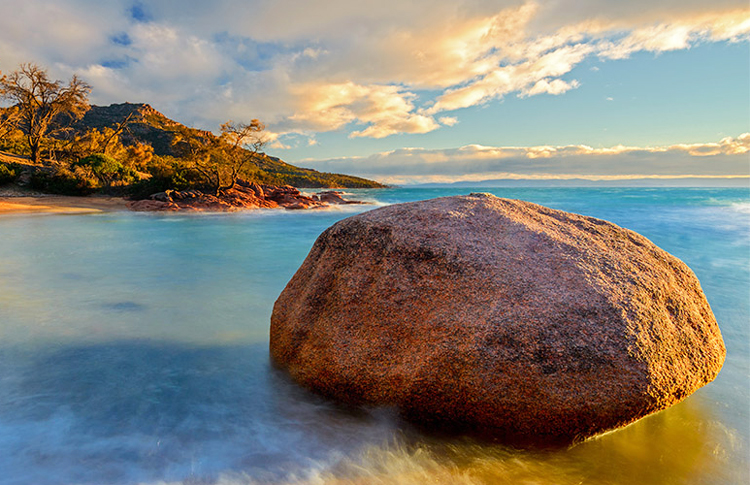
Douglas-Apsley National Park
Douglas-Apsley National Park, an expansive area of 16,080 hectares (3,9734 acres) close to the picturesque coastal town of Bicheno, abounds in lush rainforests, crystal clear waterfalls, and deep swimming holes. The park is known for fantastic hiking, swimming, snorkelling, and deep-sea fishing opportunities, not to mention wildlife watching. Make sure to keep an eye out for rare and endangered species, some of which you won’t be able to find anywhere else in the world.
Best Douglas-Apsley National Park hiking trails
- The Apsley Gorge Circuit is a relatively easy trail that will take you up to a ridge before you descend into the gorge where you can swim in the crystal clear waters of the Apsley River.
- The Heritage and Leeaberra Falls Walk at the park’s northern end is somewhat more challenging and best done as a day trip.
- The Leeaberra Track is a multi-day walk through the deep gorges and rainforest reserved for the most experienced hikers.
Discover other beautiful Tasmanian trails in our guide to Best Tasmania Hikes.
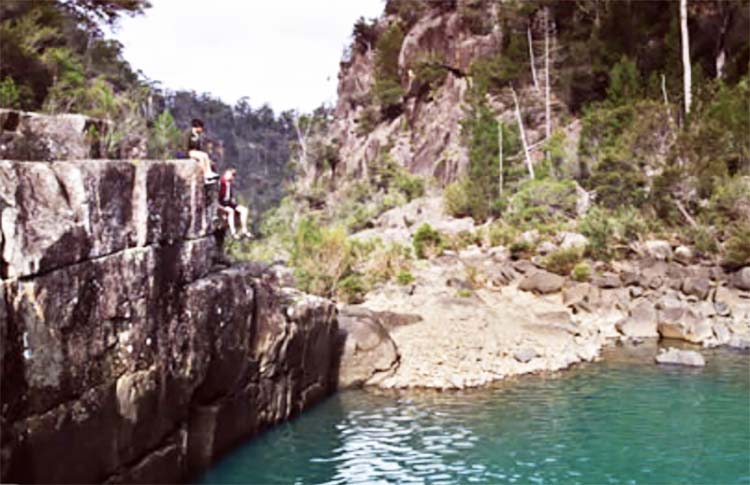
Bay of Fires
Bay of Fires is a 50 km (31 mi) long stretch of untouched wilderness extending all the way from Eddystone Point in the north to Binalong Bay in the south. The orange lichen that grows on the granite boulders, after which the park was named, is the most iconic feature of the park along with pristine white beaches and turquoise ocean. Clear waters and abundant marine life provide wonderful diving, snorkelling, and surfing conditions, but the park is also a popular spot for bushwalking and bird-watching.
More things to do along the Bay of Fires
- Drive to the pink-granite Eddystone Point Lighthouse that has been directing ships around hazardous Victoria and Georges Rocks since as far back as 1889.
- Explore the serene Priory Valley where you can taste local cool climate wines and enjoy panoramic views of the area.
- Visit the Ansons Bay Lagoon, a perfect spot for kayaking and fishing.
Spend a day at the Bay of Fires on our 12 Day Complete Tasmania Tour.
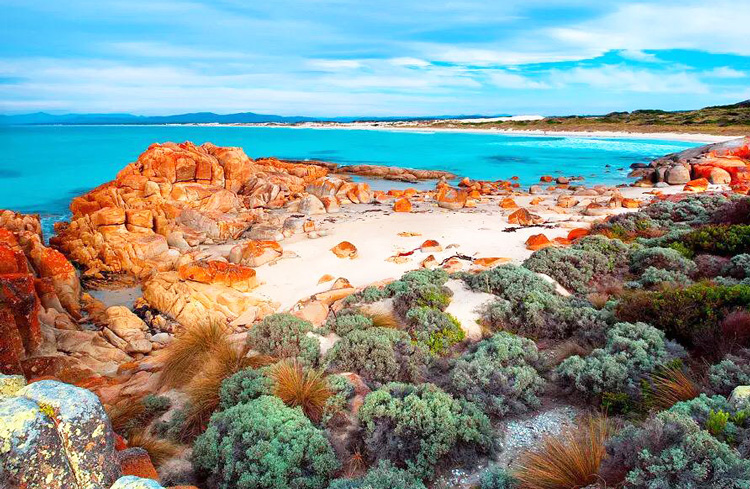
Maria Island National Park
Maria Island National Park is a place of contrasts. Famous for its extraordinary natural beauty, it also houses the most intact convict sites in Australia. The island was discovered in 1642 by navigator Abel Tasman, who named it after the wife of the Dutch colonial governor Maria van Diemen. In the 19th century, the settlement of Darlington housed a penal colony that later became a probation station with close to 500 convicts. Today, the island’s only residents are Forester kangaroos, wombats, wallabies, and other native wildlife. The waters around the island are frequently visited by seals and whales and make for spectacular snorkelling and diving.
Best ways to explore Maria Island
- There’s no vehicle access to Maria Island and the park is best explored on foot. There is a variety of trails and circuits to choose from to suit any fitness level.
- Another great way to discover the island’s natural beauty is by bike. Maria Island by Bike Guide provides extensive information about different trails.
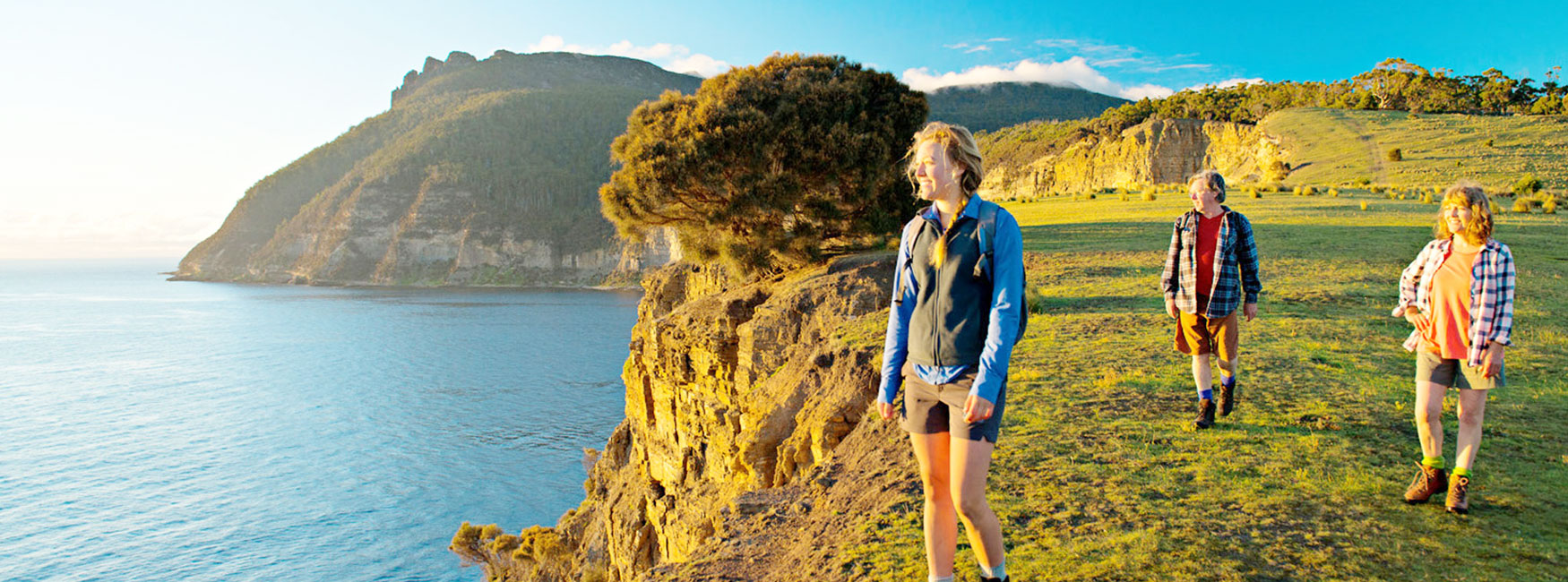
Bruny Island
Bruny Island, located just off the coast of Hobart, is one of Tasmania's most beautifully preserved natural environments. Bruny consists of two islands—North Bruny filled with open pastures and light bushland and South Bruny, home to the national park and large rainforest area—joined by a narrow strip of land known as The Neck.
Bruny is popular among visitors and wildlife alike, and common animal sightings include white wallabies, black-faced cormorants, swift parrots, as well as the endangered forty-spotted pardalote, one of Australia’s rarest birds. Don’t miss the opportunity to see the world’s smallest penguins, with peak viewing between September and February.
More things to do on Bruny Island
- Make your way to the Cape Bruny Lighthouse, Australia’s second-oldest lighthouse offering iconic views of the Tasman Sea, South East Cape, and Whale Head.
- Join the half-day Bruny Island Cruise, named among the Top 100 Trips of the World by Travel + Leisure Magazine.
- Discover the island’s fresh local produce, including oysters, artisan cheeses, honey, berries, and chocolate.
Learn more about Tasmanian local produce in our Guide on Tasmanian Specialities.
Tour Bruny Island as part of our 10 Day Tasmania & Bruny Island Escape Itinerary.
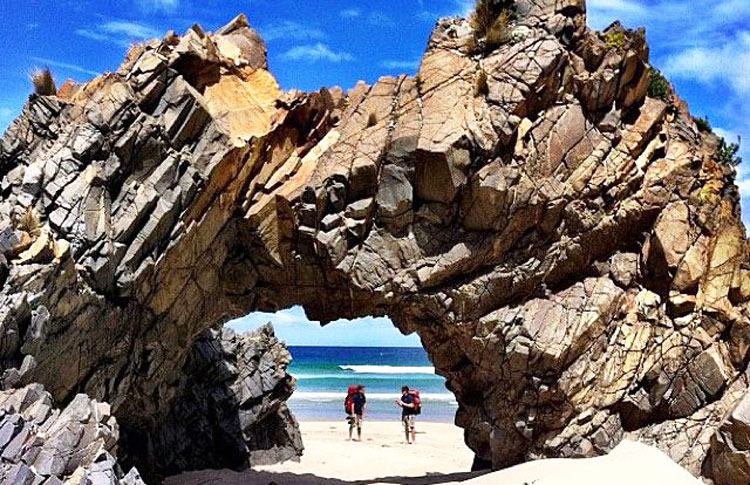
Take Part In Outdoor Adventures
If you like active holidays, Tasmania’s East Coast offers no shortage of activities, from hiking and mountain biking to a variety of on-the-water ventures like fishing, diving, and surfing.
Mountain biking & Surfing
Tasmania is considered to be Australia’s mountain biking capital. The island is packed with world-famous tracks that wind through spectacular landscapes, from mountains and myrtle forest to sea and white-sand beaches. The best known are St Helens Mountain Biking Trails, accessible to mountain bikers of all skill levels.
More East Coast mountain bike rides
- The Bay of Fires Trail is a challenging 42 km (26 mi) ride that starts at the Blue Tier and threads its way through sub-alpine terrain to the white sands of Swimcart Beach in the Bay of Fires.
- Freycinet National Park offers ample opportunities for adrenaline-pumping quad biking adventures along bush tracks, through climbing hills, and eucalypt forests.
Surfing
Tasmania’s East Coast soft sandy beaches and rolling waves make it one of Australia’s prime surfing destinations. The island’s best surfing spots are clustered along the Surf Coast, between Bicheno and St Helens Point. Most are suitable for beginners and you can easily learn surfing basics at local surf schools in just a matter of hours.
Best surf spots on the East Coast
- The beaches at Seymour, Bicheno, Falmouth, Scamander, and Beaumaris offer plenty of great surfing opportunities year round.
- With its calm waters and easy access to surf schools and surfboard rentals, Clifton Beach is one of the best places for beginners.
- Shipstern Bluff has gigantic swells, shallow reefs, and sharks and is only suited for the most skilled surfers.
Fishing & Diving
The East Coast is home to Tasmania’s finest fishing rivers. Apart from the marine reserves along the western coast of Maria Island and Governor Island where fishing is not permitted, you can catch Australian salmon, flathead, bream, even shark and skate almost anywhere between the towns of Orford and St Helens. Tasmania also has some of the most abundant game fishing waters in the world. You won’t need a licence for rod and line saltwater or marine fishing, but recreational sea fishing licences are required for some species like rock lobster and abalone.
Best fishing spots on Tasmania’s East Coast
- The seaside village of Orford is among the top spots for catching salmon, flathead, and whiting.
- St. Helens offers excellent conditions for estuary and bay fishing, in addition to being one of the best places for offshore and big game fishing.
- Eaglehawk Neck abounds in game fish, including large southern bluefin tuna, yellowfin tuna, mako sharks, albacore, swordfish, and striped marlin.
Diving
With its clear waters and more than 5,000 kilometres of coastline, Tasmania’s East Coast has some of the best conditions in the world for temperate diving. There’s no shortage of shallow water dives where you can interact with seals and dolphins, but Tasmania's best diving sites, with highlights such as sheer rock walls, deep fissures, sea caves, giant kelp forests, and shipwrecks, have a seafloor depth of up to 40 m (130 ft) and require diving certification. Over 1,000 vessels have been lost in Tasmanian waters, the most famous being SS Nord which lies, mostly intact, near Tasman Island and Troy D off the Maria Island coast.
Best diving spots on the East Coast
- The town of Bicheno with its renowned Magic Garden—a 38 m (124 ft) wall covered in delicate marine life—is considered by many to be the best spot for diving on Tasmania’s East Coast.
- With its incredibly rich marine ecosystem, Maria Island offers some of the most exciting dives in Tasmania.
- Bruny Island has excellent diving conditions and plenty of caverns, overhangs, and kelp forests only waiting to be explored.
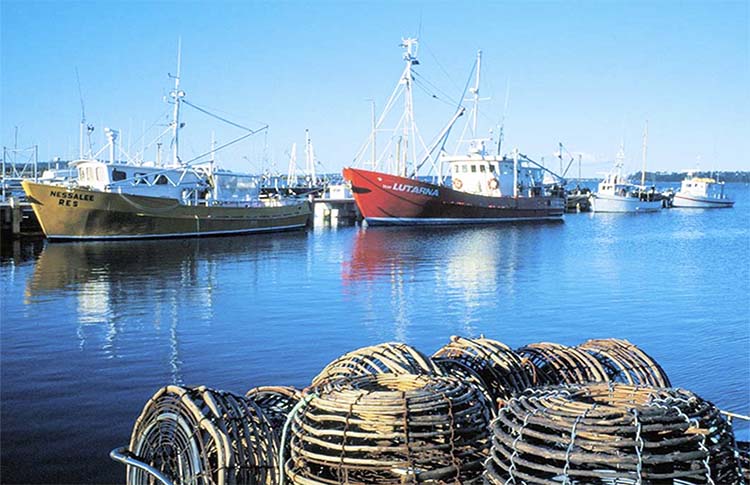
Wildlife Encounters
Tasmania is the only part of Australia where you can encounter eastern quolls, pademelons, spotted-tail quolls, Tasmanian devils, and other local species in their natural environment. Several wildlife parks and sanctuaries working to preserve the island’s unique wildlife are well worth a visit.
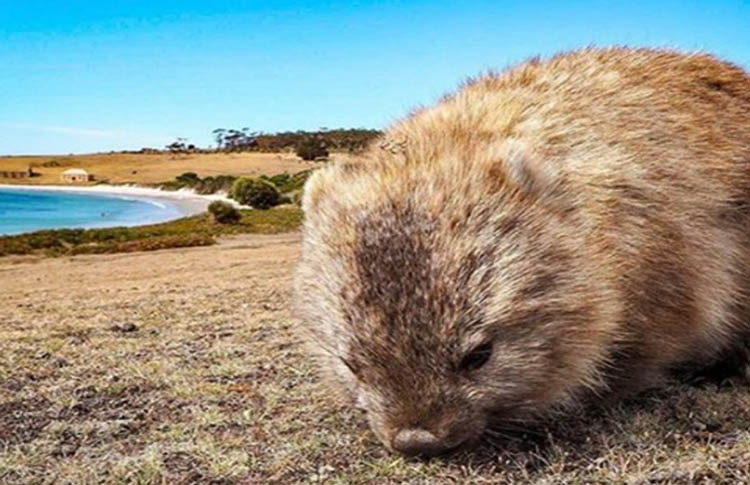
East Coast Natureworld
There’re few better places to experience Tasmania's wildlife than East Coast Natureworld, set amongst 60 hectares (150 acres) of natural parkland and lagoons just a few minutes’ drive north of Bicheno. Wildlife is abundant throughout the park—expect to see Tasmanian devils, wallabies, quolls, snakes, wombats, kangaroos, and many other native species. Feeding times offer a chance to meet the keepers and ask questions about the animals, while the popular Devils in the Dark tours provide a glimpse into the life of the iconic Tasmanian creatures.
Experience unique wildlife encounters on the Tasmania Wildlife Self Drive Tour.
Tasmanian Devil Unzoo Sanctuary
Tasmanian Devil Unzoo Sanctuary is dedicated to saving endangered Tasmanian devils. Originally housing orphaned Tasmanian devil pups, today this cageless zoo features many other native species, including quolls, pademelons, and kangaroos. The best way to learn more about Tasmanian devils firsthand is to join the Devil Tracker Adventure guided 4WD tour. You’ll get the unique opportunity to learn how Tasmanian devils are being tracked and how their nocturnal activity is monitored with the help of high-tech infra-red cameras.
Visit Tasmanian Devil Unzoo on our Wildlife Encounter and Iconic Tasmania Tour.
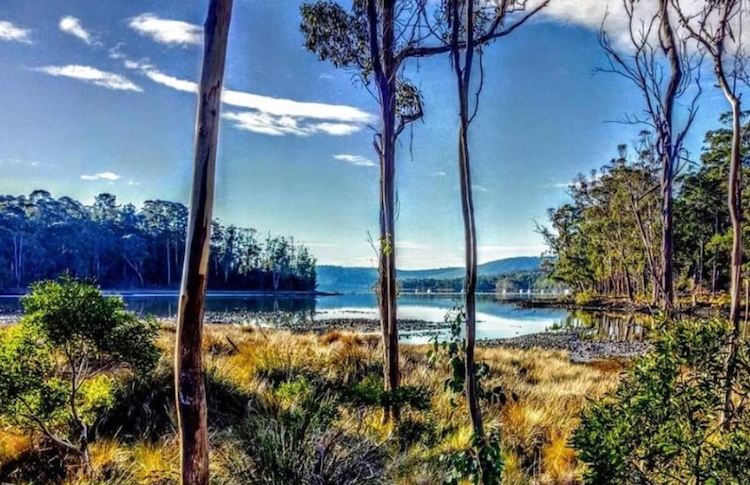
Whale watching
Tasmania’s whaling industry flourished during the 19th-century. In fact, Van Diemen's Land had enough whales to support no less than 32 whaling stations, scattered between Bicheno in the north to Recherche Bay in the south. Commercial whaling caused a drastic decrease in whale population, but after it ended in 1978, whale sightings have once again become more common.
Each year, thousands of humpbacks, rare southern right whales, orcas, and endangered blue whales make a journey from Antarctica to Tasmania’s East Coast and back again. The best places for whale watching are Frederick Henry Bay and Great Oyster Bay, and sightings also regularly occur in the d’Entrecasteaux Channel, near the South Arm Peninsula, and around Bruny Island and the Tasman Peninsula.
Best time to see whales on the East Coast
The timing of whale migration can vary from year to year depending on the water temperature, sea ice, prey abundance, and predation risk. However, most humpback whales migrate north between May and July to return towards the Southern Ocean between September and November. Southern right whales usually head north between June and September and then head back south between September and late October
Penguin watching
With Tasmania's proximity to Antarctica, it comes as no surprise that penguins managed to find their way onto the island. There’s only one penguin species in Tasmania, eudyptula minor, also known as the fairy or little blue penguin due to its bluish coloured fur. Only about 40 cm (15.7 in) high, they are the world’s smallest penguins.
Viewing penguins in their natural habitat is a magical experience like no other. The best place to get up close and personal with these adorable creatures is the seaside town of Bicheno. Join the Bicheno Penguin Tour and prepare yourself for cuteness overload as you watch the penguins waddle back to their burrows at night, after spending the day fishing in the ocean.
Penguin watching is part of our Ultimate Tasmania Wildlife Family Holiday Itinerary.
Immerse Yourself in History
There’s no better way to get acquainted with Tasmania’s history than to explore its historic sites and heritage museums. Tasmania houses almost half of all Australia's UNESCO World Heritage-listed convict sites, and several penal settlements from the late 18th and early 19th centuries have been maintained as museums.
Port Arthur Historic Site
Port Arthur, located on the Tasman Peninsula around 60 km (37 mi) southeast of Hobart, contains ruins of one of the most infamous penal establishments in the world. It was founded by the governor of Van Diemen’s Land, George Arthur, as an attempt to centralise the numerous penal settlements scattered around the island and test his theory that prisoners were capable of reforming by punishment. The site contained many key manufactories, including shipbuilding, shoemaking, smithing, in addition to timber and brick factories until it was badly damaged in the 1897 bush fire. The ruins are today preserved as a museum.
Discover the Port Arthur Historic Site on our 8 Day Tasmania Escape Self Drive Tour.
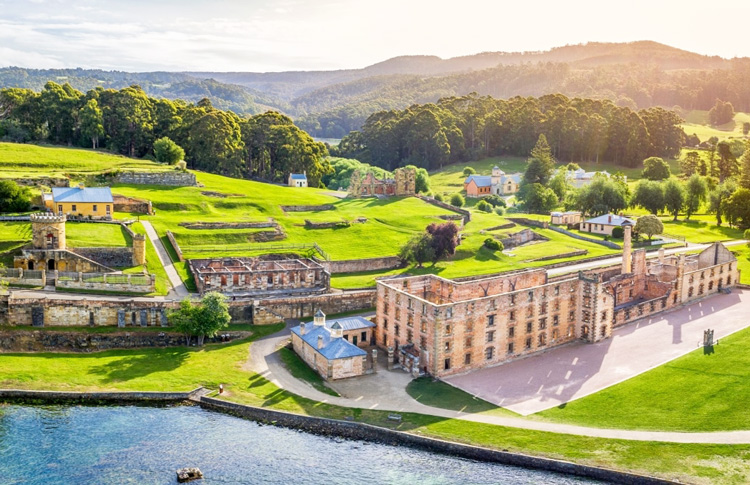
East Coast Heritage Museum
The East Coast Heritage Museum in the postcard-worthy coastal town of Swansea covers Tasmanian history from its Aboriginal past to modern times. The permanent collection displays thousands of artefacts, books, documents, and photographs to help visitors gain a better understanding of the history of the region. Highlights include a diorama of old Swansea, books and costumes of 19th century Australian photographer Louisa Anne Meredith, as well as a database of over 1,000 convicts who went through the probation stations in the region. The large egg collection featuring an egg of the extinct Tasmanian emu is not to be missed.
Learn more about Australia's aboriginal past on FLT’s Australian Culture & Heritage Tours.
St. Helens History Room
St Helens History Room is a must-see for any history lover. This small regional museum hosts over 1,000 objects and 20,000 photographs related to various stages of settlement of St Helens, including an extensive collection of Aboriginal stone tools, model boats showcasing the local history of boatbuilding, and an installation dedicated to the discovery of tin in the 1870s. The tales of Chinese tin miners and the extensive family history archive of the first settlers provide an intimate look into 19th century Tasmania.
Immerse yourself in Tasmania’s rich history on our 10 Day Wonders of Tasmania Self Drive Tour.
Coal Mine Historic Site
Tucked away in Little Norfolk Bay on the northern end of the Tasman Peninsula, the Coal Mines are the only surviving penal coal mines in Australia. They were among the first commercial mines in Van Diemen's Land and played a major role in the economic development of the island. The mines were established in 1833 as an out-station of the Port Arthur penal settlement to provide the most severe form of punishment for re-offending convicts. Today, the site includes remains of mine shafts, prison complexes, wharves, quarries, constable stations, cemeteries, and other historic remnants.
Take a dive into the history of the region on FLT’s Premier Tasmania Self Drive Tour.
Discover the East Coast Wine Region
Tasmania’s East Coast is one of the most important cool climate wine growing regions in the world. The first grape vines were planted in 1833 by early Falmouth settler William Steel. Today, there are around 22 vineyards producing almost 100 unique wines across the region, from Bream Creek in the south to the St Helens area in the north.
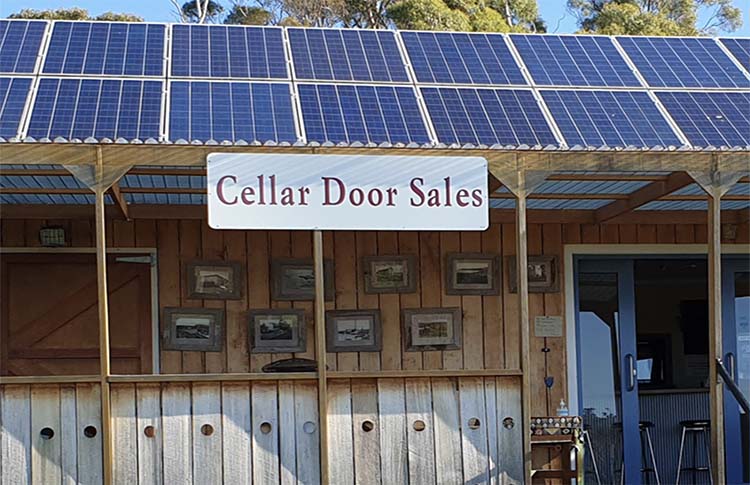
Milton Vineyard
Milton Vineyard, located 13 km (8 mi) north of the pretty seaside village of Swansea, offers one of Tasmania’s most memorable wine tasting experiences in a picturesque setting. Established in 1826 as a farm that produced extra fine Tasmanian wool, today the vineyard focuses on making small quantities of handmade cool climate wines. The region’s unique microclimate perfectly suits the ancient grape Pinot Noir and Syrah, but also the aromatics, Pinot Gris, Riesling, and Gewurztraminer, and Chardonnay.
Taste Tasmanian’s delicate wines on our 7 Day Tasmania Wildlife and Wine Romantic Escape.
Gala Estate Vineyard
Gala Estate Vineyard in Cranbrook, around 2 hours drive from Hobart along Tasmania's scenic Great Eastern Drive is the island’s second-oldest continuous family business. It was established in 1821 by Scottish brothers Adam and John Amos who started by growing wheat for trading and supplying flour for the gold rush in the 1850s. Today, Amos’ descendants are still living and working on the original land. The estate’s vineyard tours offer an unparalleled experience where you can meet the winemakers and taste premium Pinot Noir, Pinot Gris, and the award-winning late-harvest Riesling.
Darlington Vineyard
Darlington is a small vineyard located by the seaside town of Orford and overlooking the historic settlement of Darlington on Maria Island, from which it takes its name. This is the original site of a daring experiment by silk merchant Diego Bernacchi who attempted to establish a vineyard on stony, basaltic soils in 1885. The undertaking was unsuccessful and the idea was abandoned until Peter and Margaret Hyland planted the first vines in the early 1990s. Today, the vineyard features over 5,000 vines of four varieties—Pinot Noir, Chardonnay, Riesling, and Sauvignon Blanc—that produce up to 10 tonnes of fruit per year.
Ready to plan your trip to Tasmania?
Ready to start planning your Tasmania’s East Coast itinerary? For more ideas on what to see and do in this part of Tasmania, check our East Coast Highlights and Tasmania Self Drive Tours. And if you’d like a custom-made tour just for you, don’t hesitate to get in touch with our knowledgeable team who’ll help you create a unique self-drive experience.
Recent Posts
Blog Categories
Blog archives
- April 2024 (1)
- March 2024 (13)
- February 2024 (3)
- January 2024 (5)
- December 2023 (6)
- November 2023 (4)
- October 2023 (11)
- September 2023 (2)
- August 2023 (6)
- July 2023 (2)
- June 2023 (17)
- May 2023 (3)
- April 2023 (5)
- March 2023 (8)
- February 2023 (9)
- January 2023 (12)
- December 2022 (9)
- November 2022 (12)
- October 2022 (12)
- September 2022 (12)
- August 2022 (6)
- July 2022 (9)
- June 2022 (7)
- May 2022 (3)
- April 2022 (4)
- March 2022 (6)
- February 2022 (1)
- January 2022 (4)
- December 2021 (2)
- November 2021 (3)
- October 2021 (1)
- September 2021 (4)
- August 2021 (10)
- July 2021 (13)
- June 2021 (6)
- April 2021 (2)
- March 2021 (2)
- February 2021 (1)
- January 2021 (1)
- December 2020 (2)
- November 2020 (3)
- October 2020 (2)
- September 2020 (1)
- August 2020 (1)
- July 2020 (1)
- June 2020 (1)
- May 2020 (1)
- April 2020 (1)
- March 2020 (1)
- February 2020 (2)
- January 2020 (4)
- December 2019 (2)
- November 2019 (1)
- October 2019 (1)
- September 2019 (5)
- August 2019 (1)
- July 2019 (5)
- June 2019 (1)
- May 2019 (1)
- April 2019 (1)
- March 2019 (1)
- February 2019 (1)
- January 2019 (1)
- December 2018 (1)
- October 2018 (1)
- May 2018 (1)
- February 2018 (1)
- December 2017 (1)
- October 2017 (1)
- June 2017 (1)
- May 2017 (1)
- February 2017 (1)
- January 2017 (1)
- September 2016 (1)
- August 2016 (2)
- July 2016 (1)
- June 2016 (1)
- May 2016 (1)
- April 2016 (1)
- December 2015 (1)




